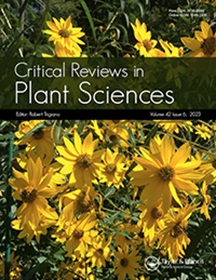对园艺特性有重大影响的小RNA
IF 6
2区 生物学
Q1 PLANT SCIENCES
引用次数: 14
摘要
摘要:蛋白编码基因在决定表型中的作用已被证实,而小rna在调节园艺性状中的作用也逐渐被认识到。小rna是20-24-nt的小非编码rna,通过转录后调控或脱氧DNA甲基化调控靶基因。在植物中,小RNA分为以下两大类:microRNA (miRNA)和短干扰RNA (siRNA)。大多数小RNA研究集中在模式植物(如拟南芥、番茄和水稻)上,并且已经确定了小RNA在植物发育中的功能(如分生组织、叶片发育、花器官识别和向开花的过渡)。近年来,小RNA测序已被应用于园艺作物基因调控的研究。植物特异性小RNA (miRNAs和phasiRNAs)家族在模式植物中具有与园艺作物相似的功能。此外,大多数植物都有独特的非保守小rna,这可能会影响特定的性状。本文综述了小RNA的生物发生、功能预测及其在园艺性状(如开花、果实品质、非生物和生物胁迫)中的作用,并对今后园艺作物的研究和育种工作进行了总结。本文章由计算机程序翻译,如有差异,请以英文原文为准。
Small RNAs With a Big Impact on Horticultural Traits
Abstract The role of protein-encoding genes in determining phenotype is well established, whereas the impact of small RNAs in regulating horticultural traits is being gradually recognized. Small RNAs are small noncoding RNAs of 20–24-nt, which regulate target genes by post-transcriptional regulation or de-novo DNA methylation. In plants, small RNAs are classified into the following two major categories, microRNA (miRNA) and short interfering RNA (siRNA). Most small RNA research focuses on model plants (e.g. Arabidopsis, tomato and rice), and has identified the function of small RNAs on plant development (e.g. meristem organization, leaf development, flower organ identity and transition to flowering). Recently, small RNA sequencing has been applied to study gene regulation in horticultural crops. Plant specific small RNA (miRNAs and phasiRNAs) families have similar function across model plants to horticultural crops. In addition, most plants have unique nonconserved small RNAs, which might affect specific traits. This review focuses on small RNA biogenesis, function prediction and the roles of small RNAs in horticultural traits (e.g. flowering, fruit quality, abiotic and biotic stress), and summarizes small RNA information for future horticultural crop research and breeding.
求助全文
通过发布文献求助,成功后即可免费获取论文全文。
去求助
来源期刊
CiteScore
12.90
自引率
1.40%
发文量
15
审稿时长
>12 weeks
期刊介绍:
Critical Reviews in Plant Sciences focuses on presenting in-depth and up-to-date reviews of timely and/or cutting-edge subjects in the broad discipline of plant science, ranging from molecular biology/biochemistry through the areas of cell biology, plant pathology and physiology, genetics, classical botany, and ecology, to practical agricultural applications. Articles in the journal provide an up-to-date literature base for researchers and students, pointing the way towards future research needs. The journal is also a significant source of credible, objective information to aid decision makers at all levels.

 求助内容:
求助内容: 应助结果提醒方式:
应助结果提醒方式:


